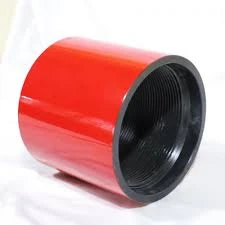- Afrikaans
- Albanian
- Amharic
- Arabic
- Armenian
- Azerbaijani
- Basque
- Belarusian
- Bengali
- Bosnian
- Bulgarian
- Catalan
- Cebuano
- Corsican
- Croatian
- Czech
- Danish
- Dutch
- English
- Esperanto
- Estonian
- Finnish
- French
- Frisian
- Galician
- Georgian
- German
- Greek
- Gujarati
- Haitian Creole
- hausa
- hawaiian
- Hebrew
- Hindi
- Miao
- Hungarian
- Icelandic
- igbo
- Indonesian
- irish
- Italian
- Japanese
- Javanese
- Kannada
- kazakh
- Khmer
- Rwandese
- Korean
- Kurdish
- Kyrgyz
- Lao
- Latin
- Latvian
- Lithuanian
- Luxembourgish
- Macedonian
- Malgashi
- Malay
- Malayalam
- Maltese
- Maori
- Marathi
- Mongolian
- Myanmar
- Nepali
- Norwegian
- Norwegian
- Occitan
- Pashto
- Persian
- Polish
- Portuguese
- Punjabi
- Romanian
- Russian
- Samoan
- Scottish Gaelic
- Serbian
- Sesotho
- Shona
- Sindhi
- Sinhala
- Slovak
- Slovenian
- Somali
- Spanish
- Sundanese
- Swahili
- Swedish
- Tagalog
- Tajik
- Tamil
- Tatar
- Telugu
- Thai
- Turkish
- Turkmen
- Ukrainian
- Urdu
- Uighur
- Uzbek
- Vietnamese
- Welsh
- Bantu
- Yiddish
- Yoruba
- Zulu
tubing pup joint
Understanding Tubing Pup Joints A Key Component in Oil and Gas Operations
In the oil and gas industry, effective extraction and transportation of resources hinge on the reliability of equipment used in drilling operations. Integral to these operations is the tubing pup joint, a vital component that plays a significant role in connecting various sections of tubing. Tubing pup joints are short lengths of pipe that are utilized to adjust the overall length of the tubing string, accommodating specific operational needs in diverse environments.
What is a Tubing Pup Joint?
A tubing pup joint is essentially a short segment of tubing, typically ranging from a few feet to several feet in length. These joints are characterized by their standard specifications, which allow them to fit seamlessly into existing tubing strings. The primary purpose of a pup joint is to serve as a filler piece, enhancing the integrity and functionality of the tubing system. They are manufactured in accordance with industry standards, ensuring compatibility with other components and systems.
Applications of Tubing Pup Joints
In oil and gas operations, the variable depths of wells necessitate the use of tubing pup joints for optimizing the installation of production tubing
. They can be used to connect two different lengths of tubing without the need for additional equipment or extensive modifications. This adaptability makes tubing pup joints particularly useful in both onshore and offshore drilling operations. Additionally, they help maintain the required casing pressure and ensure proper alignment of the tubing string, which is essential for efficient resource extraction.tubing pup joint

Material and Manufacturing Considerations
Typically, tubing pup joints are made from high-strength steel alloys that can withstand the harsh conditions encountered in well environments. Corrosion-resistant materials may also be employed to enhance durability, especially in environments where corrosive fluids are present. The manufacturing of tubing pup joints involves precise engineering and adherence to stringent quality control standards to ensure that they can handle the stresses and strains of drilling operations.
Maintenance and Inspection
To ensure the longevity and performance of tubing pup joints, regular inspection and maintenance are necessary. Any signs of wear, corrosion, or deformation must be addressed promptly to prevent system failures. Non-destructive testing methods such as ultrasonic testing or magnetic particle inspection can be employed to assess the integrity of the joints without compromising their structural integrity.
Conclusion
In summary, tubing pup joints may be small in size, but their impact on oil and gas operations is substantial. These essential components facilitate the effective management of tubing systems, ensuring that wells can be drilled and resources extracted efficiently. As the industry continues to evolve, the innovations in materials and technology will undoubtedly enhance the performance and reliability of tubing pup joints, further solidifying their crucial role in the field of energy production. Understanding their significance allows professionals in the industry to optimize operations and maintain the integrity of their systems, ultimately driving efficiency in resource extraction.
-
Tubing Pup Joints: Essential Components for Oil and Gas OperationsNewsJul.10,2025
-
Pup Joints: Essential Components for Reliable Drilling OperationsNewsJul.10,2025
-
Pipe Couplings: Connecting Your World EfficientlyNewsJul.10,2025
-
Mastering Oilfield Operations with Quality Tubing and CasingNewsJul.10,2025
-
High-Quality Casing Couplings for Every NeedNewsJul.10,2025
-
Boost Your Drilling Efficiency with Premium Crossover Tools & Seating NipplesNewsJul.10,2025







